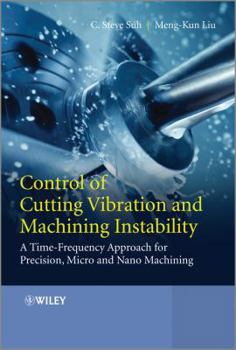Control of Cutting Vibration and Machining Instability: A Time-Frequency Approach for Precision, Micro and Nano Machining
Presents new developments on machine tool vibration controlbased on discontinuous dynamical systems
Machining instability is a topical area, and there are a widerange of publications that cover the topic. However, many of theseprevious studies have started by assuming that the behavior of thesystem can be linearised. Meanwhile, there are many recent advancesin the fields of signal processing, nonlinear dynamics, andnonlinear control, all of which are relevant to the machiningstability problem. This book establishes the fundamentals ofcutting mechanics and machine tool dynamics in the simultaneoustime-frequency domain. The new nonlinear control theorydeveloped by the authors that facilitates simultaneous control ofvibration amplitude in the time-domain and spectral response in thefrequency-domain provides the foundation for the development of acontroller architecture universally viable for the control ofdynamic instability including bifurcation and chaos. Onceparameters underlying the coupling, interaction, and evolution ofdifferent cutting states and between the tool and workpiece areestablished, they can then be incorporated into the architecture tocreate a control methodology that mitigate machining instabilityand enable robust, chatter-free machine tool design applicable inparticular to high speed micro- and nano-machining.
Presents new developments on machine tool vibration controlbased on discontinuous dynamical systemsProvides a clear and concise approach to the understanding andcontrol of machine tool and workpiece vibrations from analternative view, contributing to an in-depth understanding ofcutting dynamics and robust control of machining instabilityEquips the reader with the knowledge to understand the dynamicsof cutting and operation of machine-tool systems in differentconditions as well as the concept of cutting instabilitycontrolIncludes data examples in MATLAB coding




